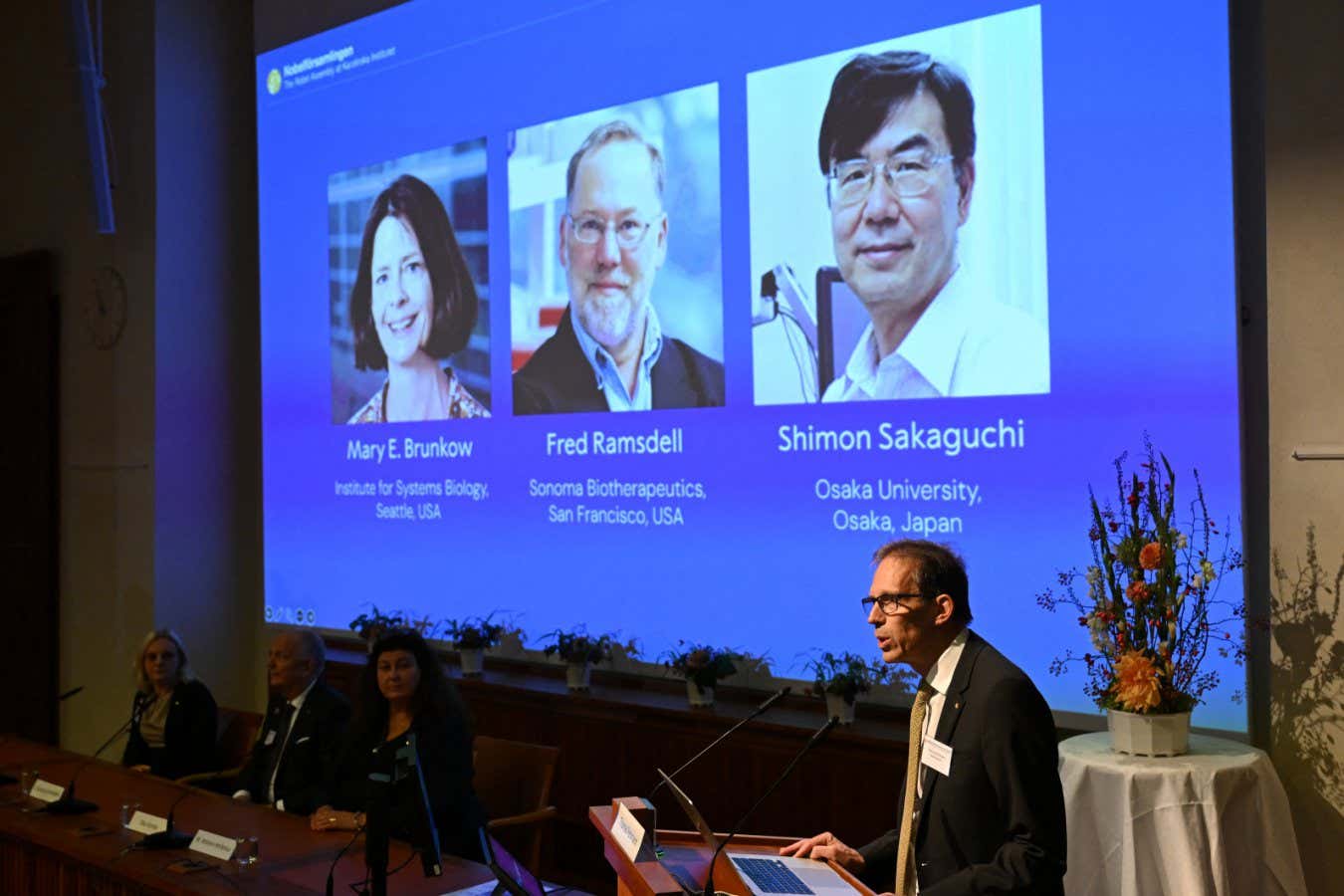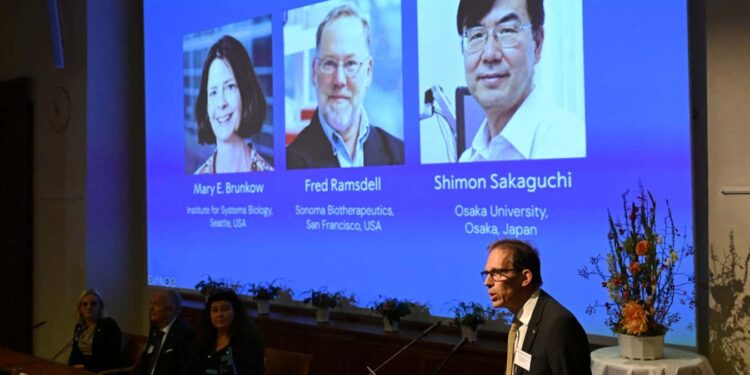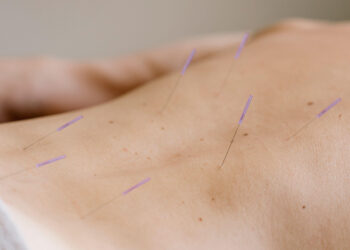
Mary Brunkow, Fred Ramsdell and Shimon Sakaguchi are announced as the winners of the 2025 Nobel prize in physiology or medicine by committee secretary general Thomas Perlmann
JONATHAN NACKSTRAND/AFP via Getty Images
The 2025 Nobel Prize in Physiology or Medicine has gone to three researchers – Mary Brunkow, Fred Ramsdell and Shimon Sakaguchi – who discovered a key kind of immune cell that helps stop the immune system attacking itself.
“It unleashed a whole new field in immunology,” said Marie Wahren-Herlenius at the Karolinska Institute in Sweden.
Immune cells called T cells play a key role in immunity by grabbing hold of invasive viruses and bacteria via receptors on their surface. New kinds of T cells are generated throughout our lives.
Sometimes the receptors on newly-generated T cells grab hold of our own proteins instead of viral or bacterial ones, which can cause conditions such as type 1 diabetes and rheumatoid arthritis.
The body does have a system for weeding out self-reactive T cells, with newly-formed ones travelling to the thymus for a test. This was long believed to be the only way that self-targeting T cells are eliminated.
But in 1995, Sakaguchi at Kyoto University in Japan showed in mouse experiments that some other cells circulating in the bloodstream must also somehow protect against auto-reactive T cells. If the thymus of mice is removed after birth, Sakaguchi found, the animals develop autoimmune conditions. But if T cells from healthy mice are injected into them, this is prevented. His team found that the specific T cells responsible for this have a protein called CD25 on their surface, and called them CD25 regulatory T cells.
Meanwhile, Brunkow, now at the Institute for Systems Biology in Seattle, Washington, and Ramsdell, an advisor to Sonoma Biotherapeutics in San Francisco, California, were studying a strain of mice that is especially likely to get autoimmune conditions. In 2001, Brunkow and Ramsdell found that these mice have a mutation in a gene on the X chromosome called Foxp3.
People with mutations in this gene are also especially likely to get autoimmune disease, due to a condition known as IPEX syndrome. In 2003, Sakaguchi showed that these two discoveries are linked – the Foxp3 gene plays a key role in the development of the CD25 regulatory cells that his team discovered. Many researchers had been sceptical about Sakaguchi’s earlier claims, said Wahren-Herlenius. But the work of Brunkow and Ramsdell clinched the case.
The discovery of regulatory T cells could lead to better treatments for a wide range of conditions. On the one hand, boosting the number of regulatory T cells could help suppress the autoimmune reactions that cause conditions such as type 1 diabetes. On the other, reducing the number of regulatory T cells could boost the immune response against cancers. A number of clinical trials are now underway.
“Their discoveries have been decisive for our understanding of how the immune system functions and why we do not all develop serious autoimmune diseases,” Olle Kämpe, chair of the Nobel Committee, said in a statement.
Topics:
- immune system/
- Nobel prizes
Source link : https://www.newscientist.com/article/2498910-nobel-prize-for-medicine-goes-to-trio-for-work-on-immune-tolerance/?utm_campaign=RSS%7CNSNS&utm_source=NSNS&utm_medium=RSS&utm_content=home
Author :
Publish date : 2025-10-06 10:42:00
Copyright for syndicated content belongs to the linked Source.














